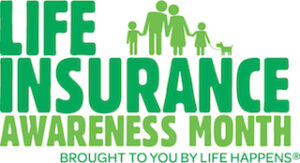You learn lots of interesting new things attending general and breakout sessions at industry conferences. Such as the case at the LIMRA Life Insurance Conference, held earlier this month at the Bellagio in Las Vegas – which was also a great place to catch that thrilling ending to the NCAA basketball championship game.
Here are some interesting tidbits from a trio of sessions, centering on how to best connect with today’s consumers and spur them into action to take care of their need for adequate life insurance coverage – and some notes on why there’s no sense in extending lifespan unless we also extend good health.
• “Social norming” is a powerful way to reach consumers about their need for life insurance coverage
One of the first breakout sessions at the LIMRA meeting – “The Mysteries of Life” – mentioned how “social norming” is one of the best ways to communicate the need for coverage to consumers. If people think people like them have life insurance, they would be more likely to take action to get covered. Problem is, most people don’t know what their friends and peers are doing in regard to life insurance because it rarely if ever would come up in normal conversation. People don’t talk about money matters with their friends because it is seen as too personal or even boring.
This is unfortunate when it comes to life insurance, because LIMRA research shows that if people know their peers have coverage, they would indeed be more likely to get covered. “Social norming” messaging was the most effective in the LIMRA study, with a positive impact on all groups. It increased their likelihood to buy, improved their perception of life insurance and had very little negative impact.
The presentation included an interesting example of how the British government uses “social norming” messaging to encourage people to pay their taxes on time. When the message was simply “pay your taxes,” 68% of those exposed to the message did so. When the message was, “9 out of 10 people in Britain pay their taxes on time,” 73% did. When the message included that “most people in your neighborhood have paid their taxes,” it shot up to 96% taking action to pay.
The study also found that messaging about “convenience” – life insurance being quicker and easier to buy than people probably think – was the least effective, and addressing cost concerns directly can often backfire, even though most people overestimate the cost of coverage.
• People lack financial literacy, but once informed are much more likely to take action
Patrick Leahy, Corporate VP, Distribution Research at LIMRA, gave a presentation titled “The Evolution of Advice” that delved into what consumers are concerned about, where they need help and how they prefer to go about addressing their needs.
Much of the focus centered around consumers just not knowing enough about insurance and retirement products and how they work. They want advisors that can adequately explain things to them, which also builds trust (while not properly explaining often makes them feel like they can’t trust the advisor).
People don’t know the industry lingo and what a lot of the terms mean, which can prevent them from taking action. People that lack financial literacy may do online research (re: Google) on their own, but tend to need help understanding it. Once they do form a better understanding, they become much more likely to take action.
People that consider themselves “not at all knowledgeable” put away just 4% for retirement while people who consider themselves “very knowledgeable” put away 15%. The “not at all knowledgeable” crowd owns just 4 insurance products while the “very knowledgeable” own twice that many insurance products.
Leahy mentioned innovative resources and programs designed to help consumers grasp the concepts, including MassMutual’s Society of Grownups – a very successful educational program that is expanding to add more “societies” in different cities.
• Longer lives without better health is a fool’s errand
If humans continue to live longer without improving the aging process, we’ll just have longer periods of frail humans. Longer life is not what we want unless we have better health along with it. This according to S. Jay Olshansky, Ph.D., who keynoted a general session titled, “Estimating Lifespan and Healthspan: The Future is Here.”
“We have to live with the body type we have, but unfortunately, it was not designed for long-term use,” Olshansky said, adding that projections of humans living to ages of 125-150 are complete nonsense. “Even if we cure diseases, the forces of aging will still kill you.”
If we are able to cure top causes of death like heart disease, cancer and stroke, Olshansky said Alzheimer’s disease would skyrocket, as would cardiovascular disease. Humans aspire to longer lifespans, but will those extra years be worth it if that extra time is spent being frail and disabled? “We don’t want to extend life unless we extend healthy,” Olshansky said.
• Blood chemistry is quickly becoming a thing of the past in underwriting
Olshansky also said that underwriting is evolving with predictive analytics and technologies such as facial recognition software. He noted that a person’s years of education has proved to be one of the most powerful indicators of longevity, and that increasingly, blood chemistry is really not needed so much anymore when it comes to underwriting. He showed a demo website, http://bit.do/4sightdemo, that uses facial recognition software and some targeted questions to quickly provide what he calls “an incredibly accurate prediction” of how long someone will live. Anyone can do the demo in just a couple of minutes by uploading a recent picture and answering the questions. The site also provides quotes for life insurance.













